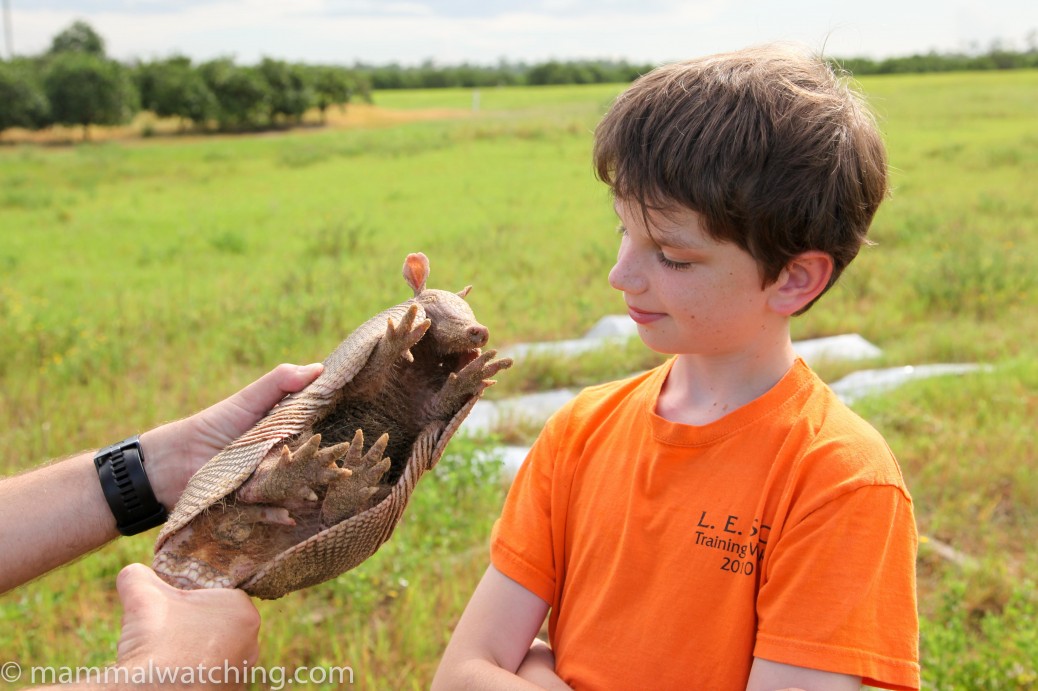
Florida
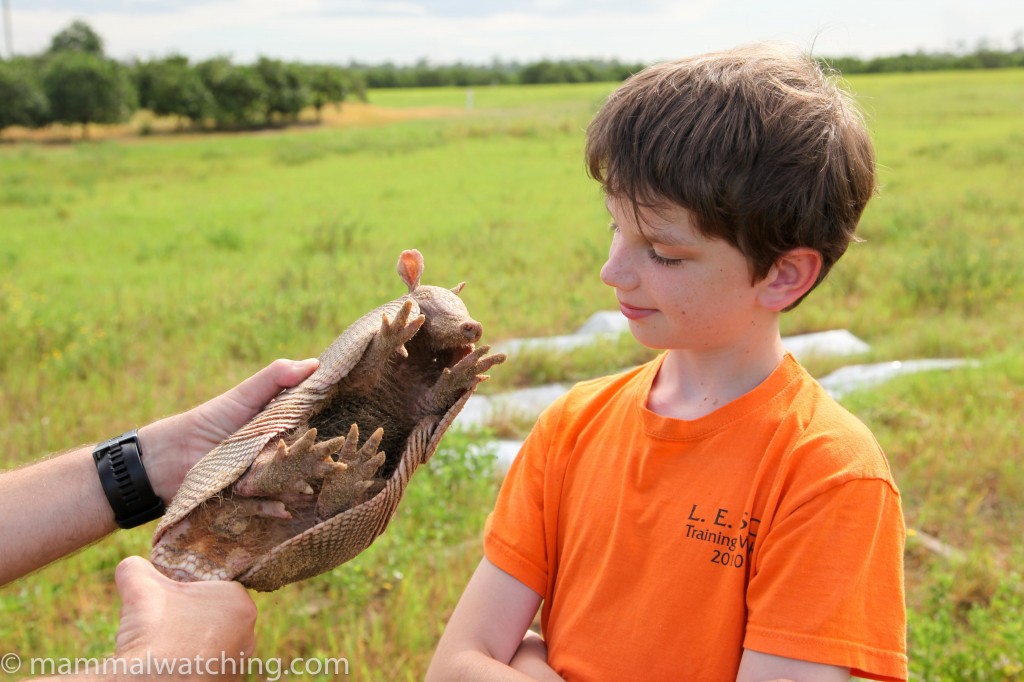
Nine-banded Armadillo, Dasypus novemcinctus, and Patrick. Okeechobee, July 2012.
I have been to Florida many times, beginning in 1998 with a few days on my way back from Jamaica to the UK. My main aim then was to see a Manatee, which I did. That said, I was pretty disappointed not to find any Armadillos (a recurring theme of several trips to the USA).
In May 2012 I returned to take part in the annual Southeastern Bat Diversity Network’s annual Bat Blitz. Each year scientists, bat workers and others from across the south eastern USA congregate for a 3 night intensive survey of a poorly known area. It is part social, part scientific and in 2012 it was run in and around the Apalachicola State Forest. not far from Tallahassee.
I have been back many times since.
Blue Spring State Park
In January 1998 West Indian Manatees were easy to see in the St Johns River.
Fakahatchee Strand State Park
I few hours in the park in January 1998 produced only a Virginia Oppossum.
Gainesville
In March 2015 I visited Payne’s Prarie for an evening to look for Round-tailed Muskrats. I didn’t see any but did see my first Marsh Rice Rat (see my March 2015 trip report). Scott Flamand and I returned to Payne’s Prarie in May 2016 and found a seemingly active Muskrat lodge at the end of the La Chua trail. But no animals. They are also seen at Sweetwater Wetlands. We looked but didn’t see any, though we did see a Bobcat.
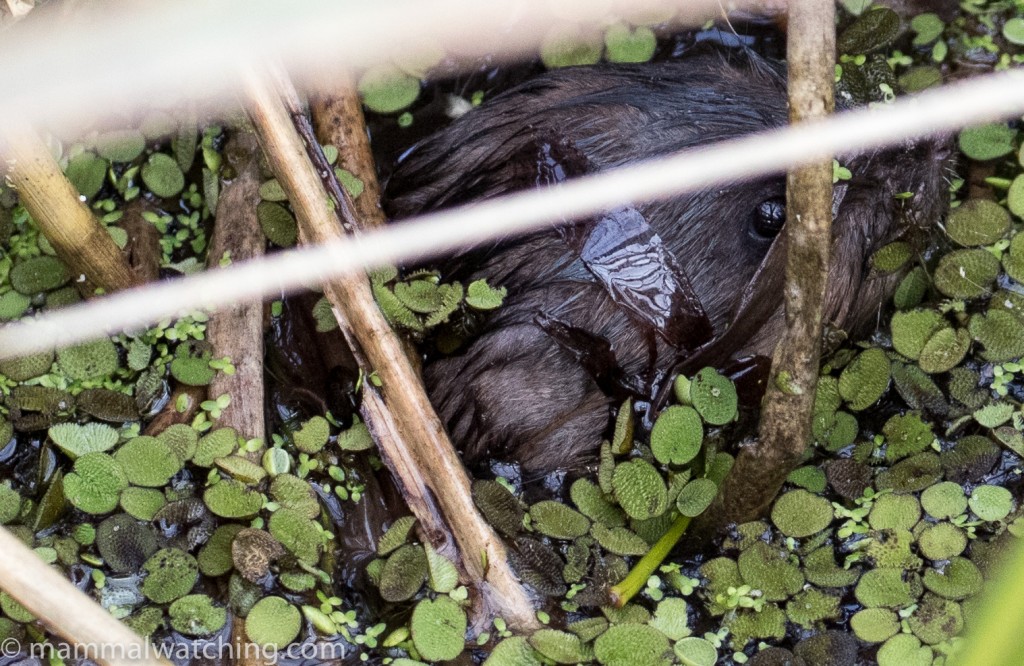
Round-tailed Muskrat, Neofiber alleni
In 2018 I was back – in late January – and eventually saw a Round-tailed Muskrat.
Miami
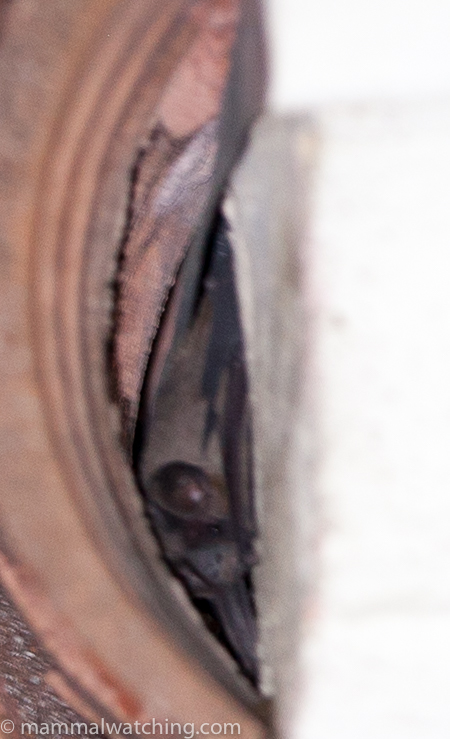
Florida Bonneted Bat, Eumops floridanus
The golf course at Coral Gables is still, as at January 2015, home to Florida Bonneted Bats and they can often be heard echolocating (and seen flying high). Try the area around the clubhouse. I was able to hear bats roosting in a house roof near here in January 2015 but they didn’t emerge, probably because the temperature at sunset was in the 60s and relatively cool. I returned two months later and saw some emerging in March 2015. The Miami Bat Squad’s facebook page is a good source for more information. What must have been a Cotton Mouse was in a nearby tree (in a suburban garden) just after sunset (see my March 2015 trip report).
Okeechobee
Okeechobee a couple of hours south of Orlando. Joshua Holbrook, a naturalist (first and foremost a herper) was generous enough to meet up with me and my kids here for six hours in July 2012. My main target was Eastern Spotted Skunk which Josh occasionally ‘flips’ while looking for herps under pieces of board or other rubbish. We search several spots in the day and spent a couple of hours spotlighting around the Kissimee Prairie State Reserve that evening. This is an area where Josh has spotlit ‘dozens’ of Eastern Spotted Skunks along the road while searching for snakes and other herps. We didn’t see any skunks though we smelled a few.
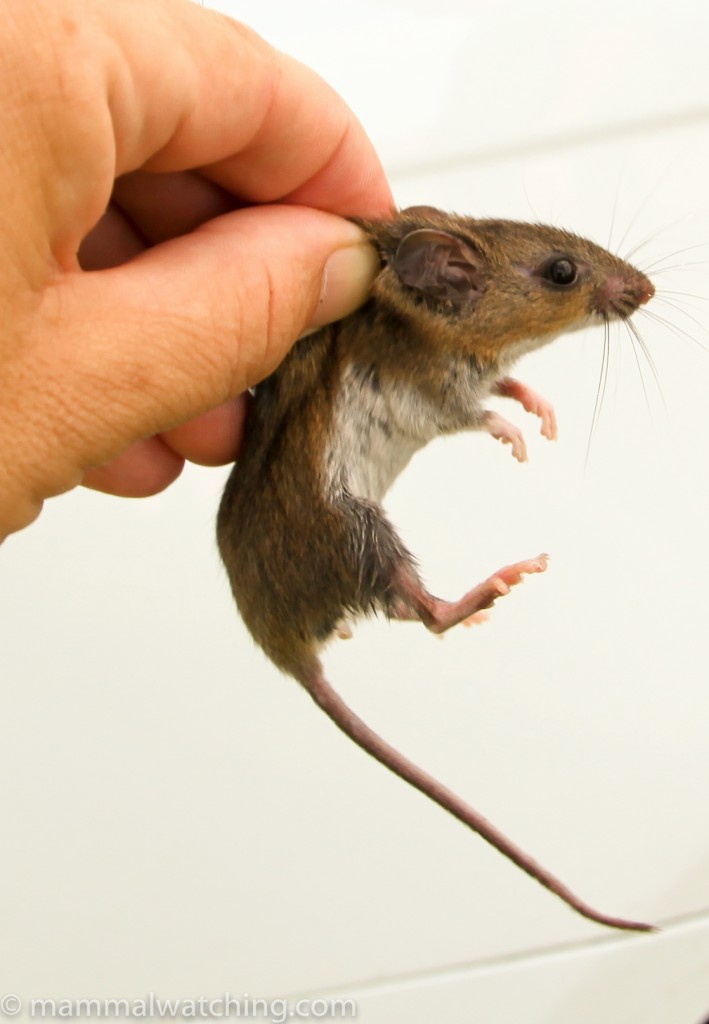
Cotton Mouse, Peromyscus gossypinus
Josh did turn up a family of Cotton Mice and rescued an Armadillo stuck in a pit. Josh also flipped a rat that none of us saw well but may have been a woodrat. There were a few White-tailed Deer and Eastern Cottontails, and plenty of snakes, around the place too.
It was fascinating to spend time with serious herpers. There is a good deal to be learned from them I am sure in how to look for mammals, and they are a much larger community than I had realised, with thousands of herpers in the USA alone. Contact Josh through his blog though he has now left Florida.
In January 2015 I returned to Kissimmee reserve for a night and eventually saw a skunk, that was almost all black save for a thin white stripe over the head onto the flanks. I tried very hard to convince myself it was a Spotted Skunk but the expert opinion was it was a Striped Skunk, which have a very large colour variation (Spotted Skunks always have some “spots”). In March 2015, I added Opossum, Raccoons and Armadillo to my list for the area, but still no Spotted Skunk.
In May 2016 I spent a night at the dilapidated Uncle Joe’s Fishing Camp in Clewiston, on the southern edge of Okeechobee. I was told that there used to be Spotted Skunks “all over the place” until about a year ago when they disappeared for no apparent reason. Needless to say I didn’t see any, though did see a Bobcat while spotlighting.
Orlando area
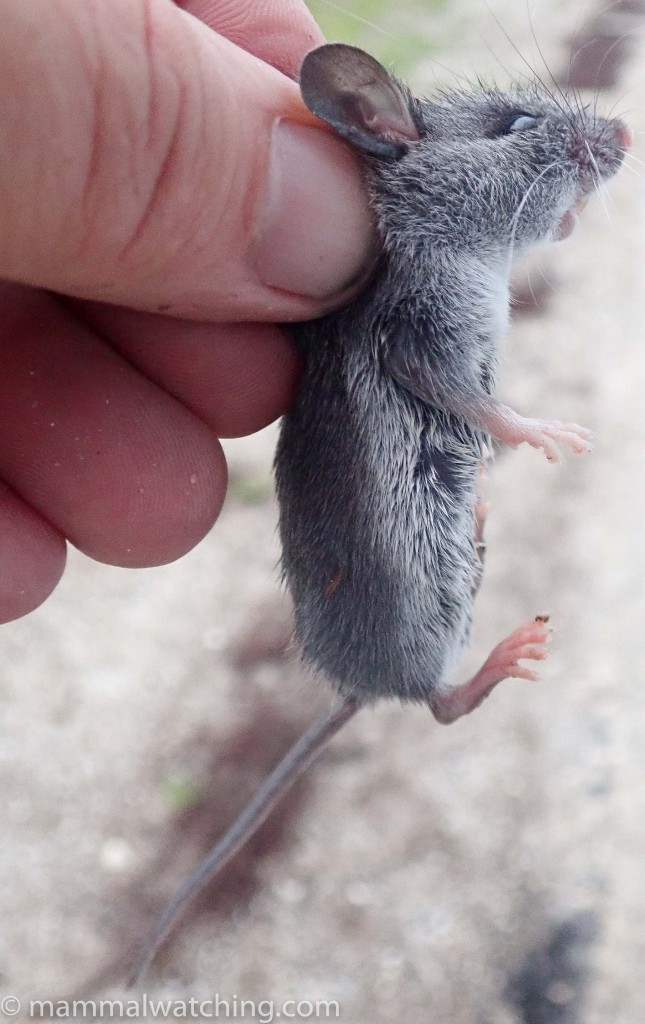
Oldfield Mouse, Peromyscus polionotus
In May 2020 I looked around the Split Oak Wildlife Management Area for Florida Mice but couldn’t see any though they are present (access is prohibited from an hour after sunset to an hour before sunrise). I did see a Southern Flying Squirrel just before dawn in the reserve as well as armadillos and White-tailed Deer. I caught Cotton and Oldfield Mice in scrub around a building site close to the reserve.
Palm Beach
Josh Holbrook told me that the canal, bordering Flying Cow Road, in Wellington (west of Palm Beach) used to be a good spot to see Roundtailed Muskrats after dark. I walked and drove along the canal several times in two visits (December 2013 & January 2015) but failed to see a Muskrat, though I did see a number of burrows that looked about the right size. I am not sure that the Muskrats are there but Raccoons and Virginia Opossums are common, and I saw an Eastern Cottontail and a Gray Fox in the area too.
Ponte Vedra Beach
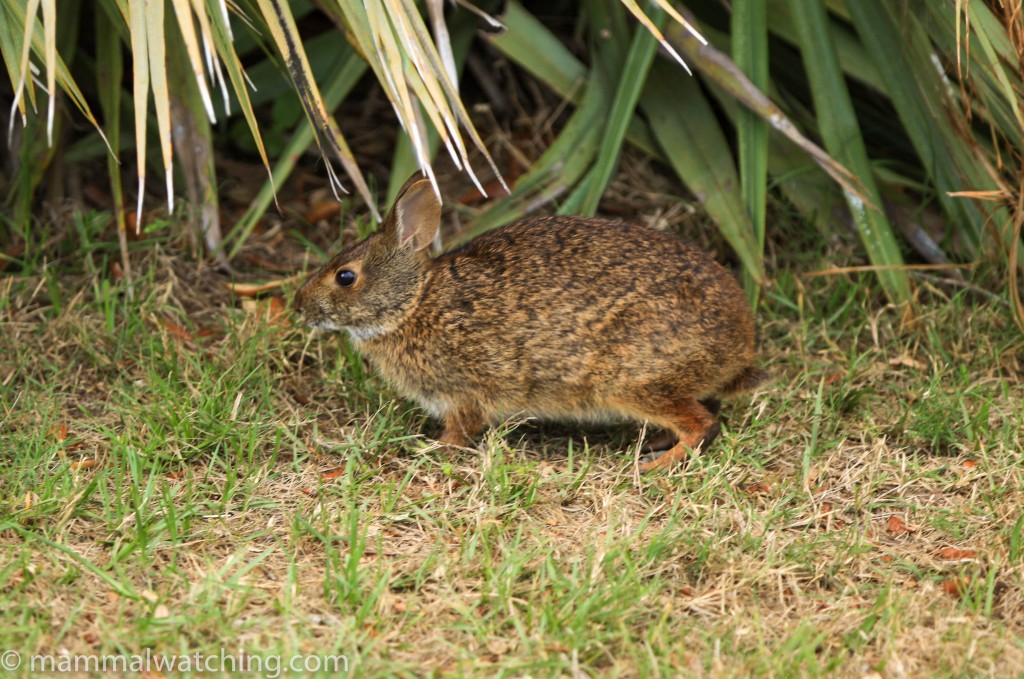
Marsh Rabbit, Sylvilagus palustris
The 2012 Florida Bat Blitz survey ran from Monday through Wednesday evenings, but there were some pre-survey trips organised on the Sunday, and I spent the evening helping to mist net at the Guana Tolomato Matanzas National Research Reserve near Ponte Vedra Beach. Marsh Rabbits were common in the late afternoon at the reserve’s visitors centre on Guana River Road. I saw a White-tailed Deer near here too and also an Armadillo (my first in the USA).
The bat catching was less successful. We put up 3 nets and caught just one animal, a Southeastern Myotis, which was a lifer for me. Raccoons were common in the forest, and I saw another Armadillo along with a big Feral Pig.
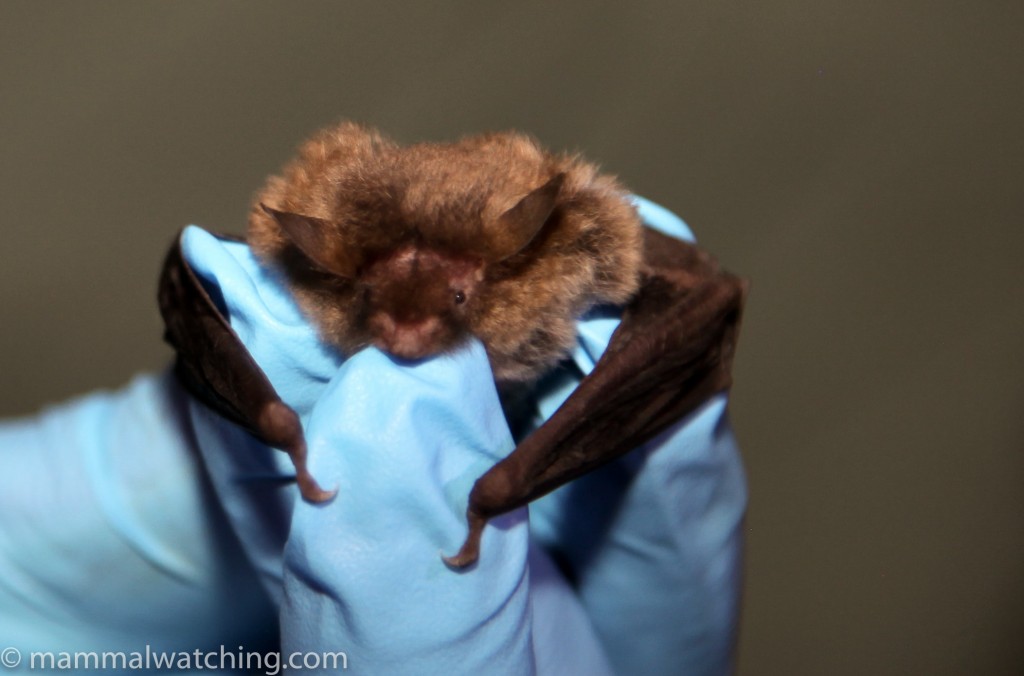
Southeastern Myotis, Myotis austroriparius
Tallahassee Area
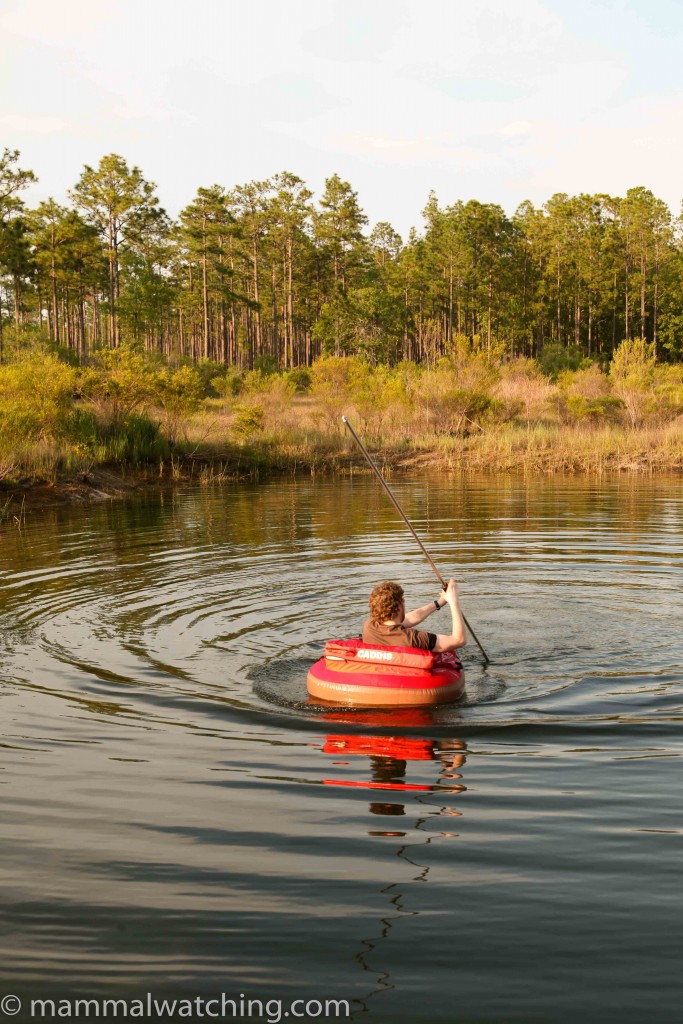
Florida Bat Blitz: setting up mist nets from a float tube
The 2012 Bat Blitz proper was held near the village of Hosford, at something called the “Woodmen of the World Camp”. There were an impressive number of cars in the car park when I arrived and something like 80 people had shown up. It was a big survey force. That made for good bat collection, but the sheer logistics made it hard (pretty much impossible) to see animals that other groups had caught, as we were processing all the bats in the field. The protocols in place for White-nosed Syndrome (which has yet to reach Florida) were rigourous and onerous which added further complications to processing our captures.
On the first night, our team of five caught more bats than the other 11 teams combined. In part this was because our site (in the southwest of the Apalachicola State Forest) was next to a bridge that housed a few hundred Mexican Freetails. But we caught another four species, three new to me.
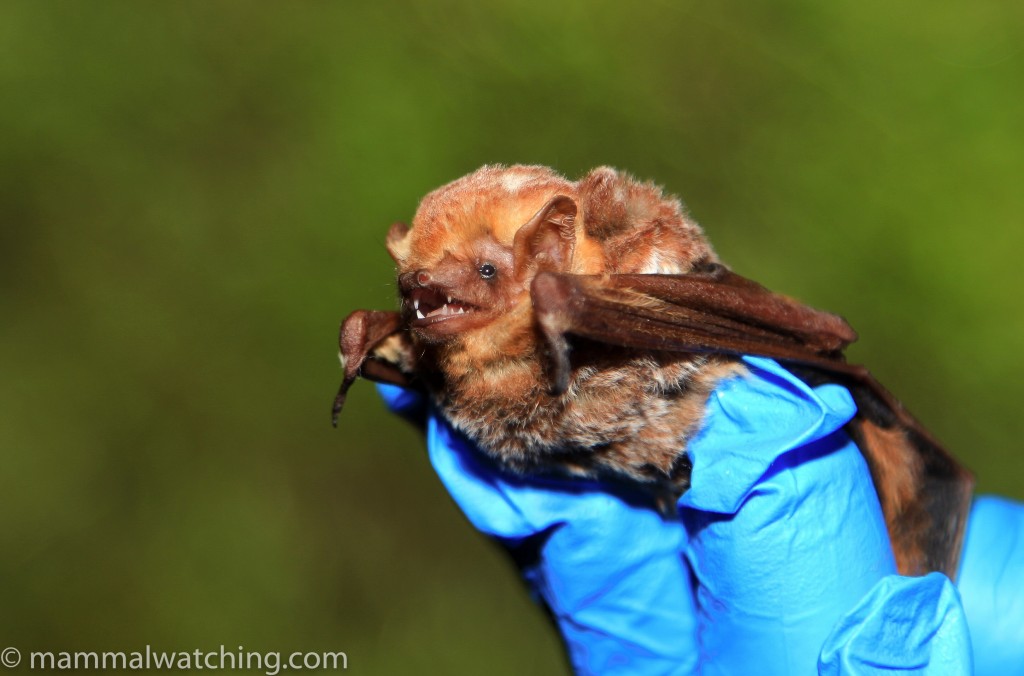
Seminole Bat, Lasiurus seminolus
Best of which were a few of the robust, furry, and very cool Seminole Bats.
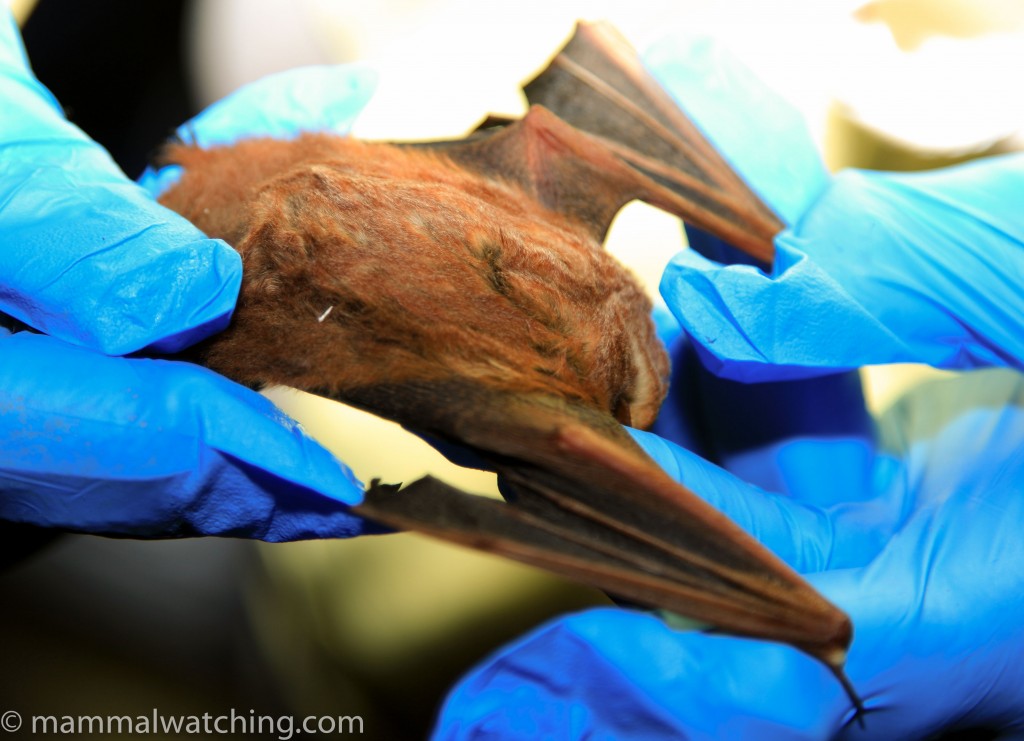
Seminole Bat, Lasiurus seminolus
We also caught several Evening Bats, a couple of Big Brown Bats, and some more Southeastern Myotis.
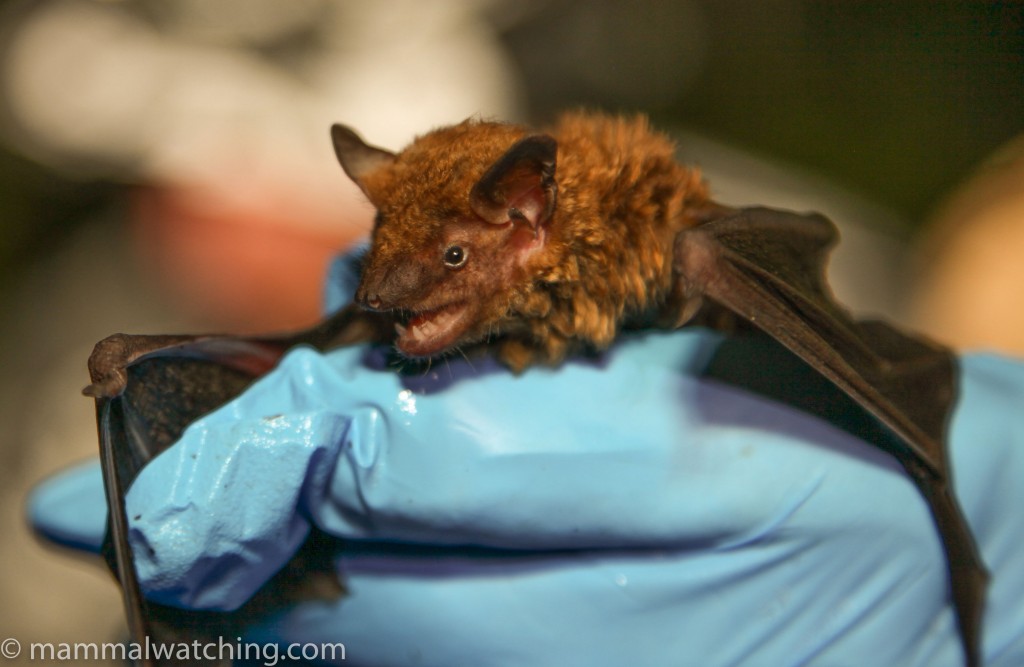
Big Brown Bat, Eptesicus fuscus
The next day we netted over a large pond just south of Tallahassee, and erected an elaborate set of nets over and around the pond We caught a handful of bats just after dusk, all in the net across the middle of the pond. The water was several metres deep so they had to be collected from an improvised float-tube coracle.
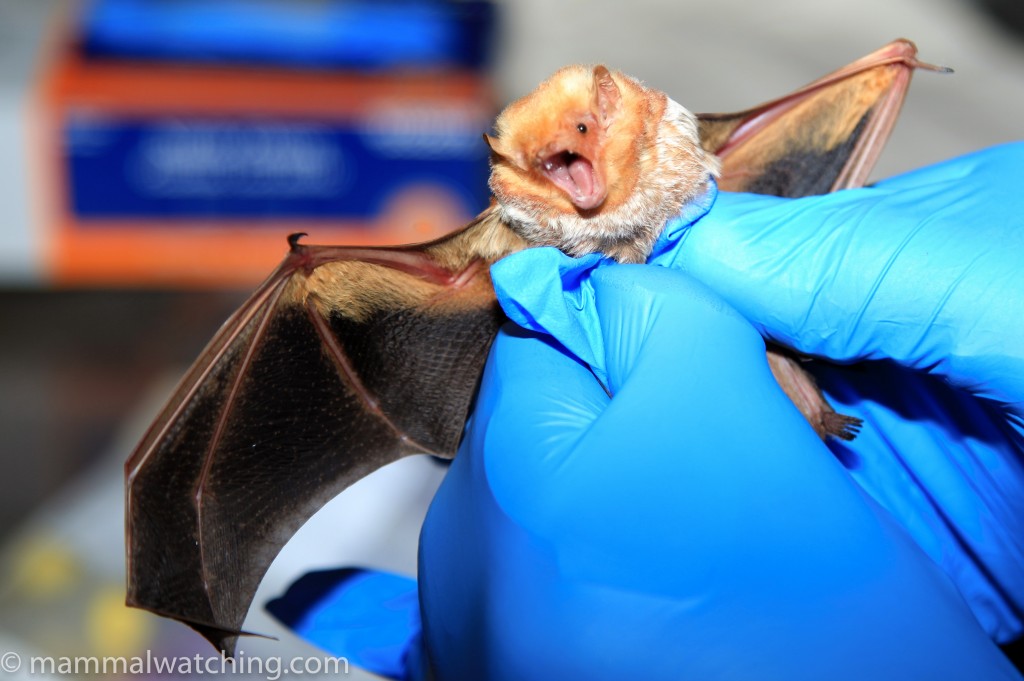
Eastern Red Bat, Lasiurus borealis
One animal was a Red Bat, my target for the night fifth lifer of the trip. They are rather similar to Seminoles, but redder. We also caught another Seminole Bat and an Evening Bat.
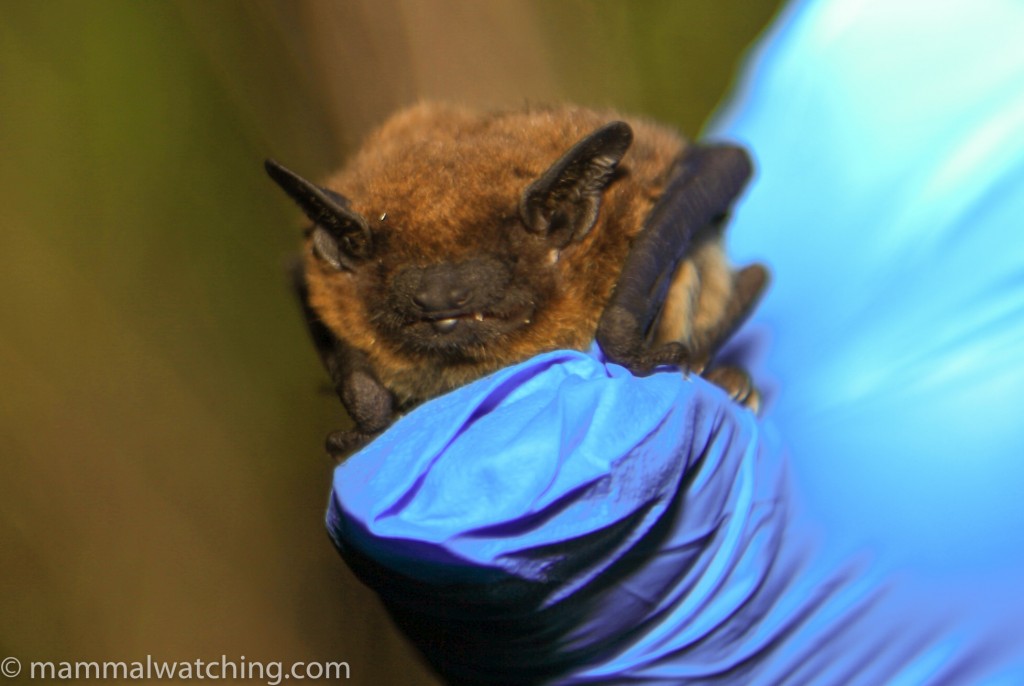
Evening Bat, Nycticeius humeralis
Other teams also caught a few Raffinesque’s Big-eared Bats and Eastern Pipistrelles, so in 3 days a total of 246 bats, from eight species were caught. Bat Blitzs are fun and a great way to see some bats. I hope to get to do more of them.
Yulee
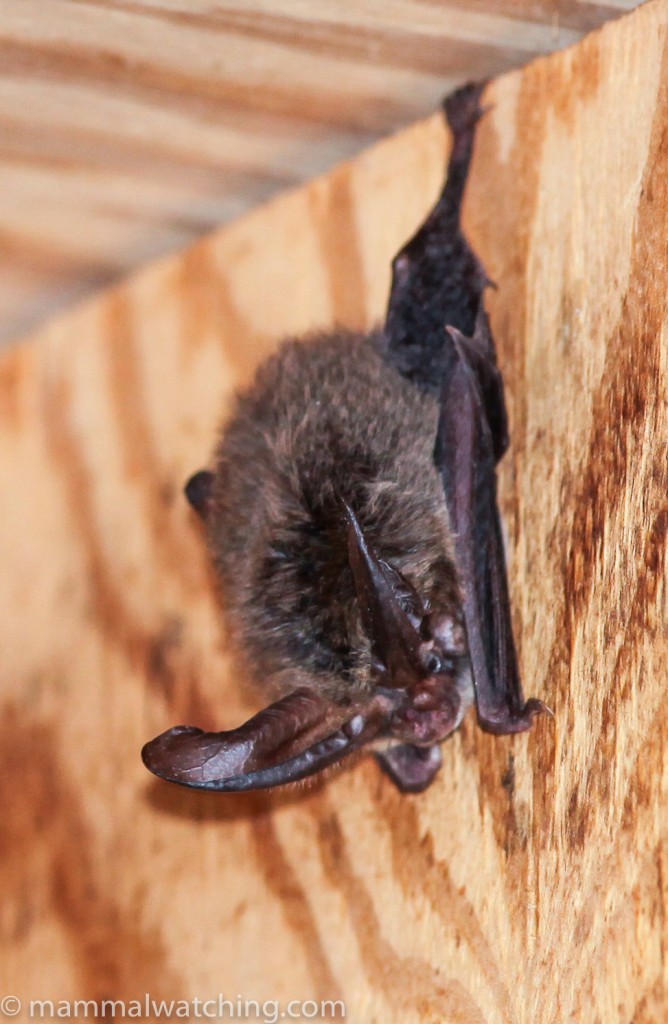
Rafinesque’s Big-eared Bat, Corynorhinus rafinesquii
Yulee is as far north as you can get in Florida without getting into Georgia. In July 2012 I visited a private zoo where I’d heard a Rafinesque Bat often roosts and I was in luck.
Community Reports
Florida, 2024: William Henri Lewis, 3 nights with 7 species including Manatees and Marsh Rabbits.
Fort Myers, 2024: Joey Bunk, a long weekend with 7 species including Marsh Rabbit and Manatee.
Miami, 2022: Ben Balmford, 2 days & 6 species including Marsh Rabbit, Manatee and Eastern Woodrat.
Florida and Georgia, 2019: Sjef Ollers, a few days & 13 species including Southern Short-tailed Shrew, Bobcat, River Otter and the last few seconds of a Round-tailed Muskrat‘s life.
Gainesville, 2018: Jon Hall, 36 hours and a Round-tailed Muskrat.
Florida, 2018: Rick van der Weijde, notes of 3 weeks & 16 species including Eastern Woodrat, Black Bear, Bobcat and Southern Flying Squirrel.
Florida, 2015: Jon Hall, 36 hours with Florida Bonneted Bats and a Marsh Rice Rat
Florida, 2013: Mike Richardson, 2 weeks & 17 species including an Eastern Spotted Skunk and Black Bear.
Florida & California, 2013: Romain Bocquier, 10 days & 20 species including River Otter, Long-tailed Weasel and Bobcats.
Florida, 2011: Morgan Churchill & 7 species including Marsh Rabbit.
Florida, 2009: Mark Hows, 2 weeks & 14 species of mammals including Marsh Rabbits.
Also See
Where to see Armadillos in Florida?, April 2024
Jaguarundi in Florida!?, March 2024
Miami Trip RFI (Manatees and more) March 2022
Wakodahatchee Nature Preserve, Delray Beach is reliable for Marsh Rabbit, February 2020
Florida Natural Areas Inventory: useful guide to the rarer mammals (and other wildlife) of Florida.
South Florida & St Croix RFI., August 2014
Florida RFI: Manatees and more, March 2013
Where to see Florida Bonneted Bats, November 2013
Central Florida RFI, May 2013
Everglades Information including sites for Southern Short-tailed Shrew and Seminole Bats, January 2013
Tallahassee RFI, March, 2012
RFI Florida in late November a lot of information on sites for various Florida specialties including Round-tailed Muskrat and Marsh Rabbits, October, 2011


Leave a Reply
You must be logged in to post a comment.